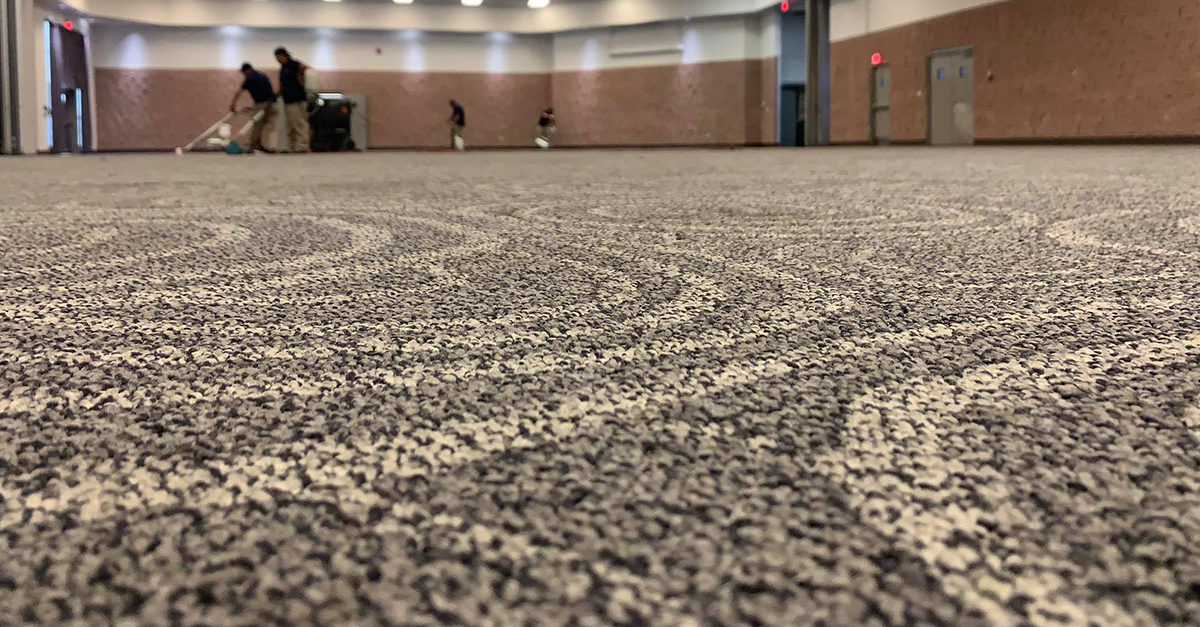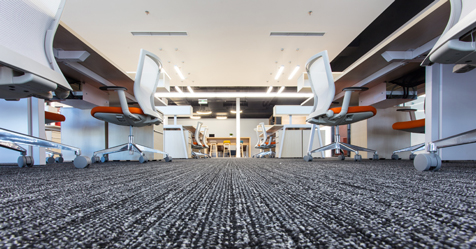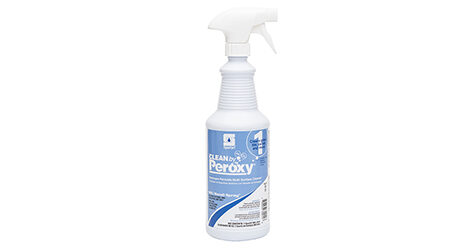In just a few short months, facility managers across the country have had to become cleaning experts. The COVID-19 pandemic has introduced a new urgency to cleaning and disinfecting that simply wasn’t there before. Facility managers are studying guidelines from the U.S. Centers for Disease Control and Prevention, developing strict cleaning protocols, and partnering with their building service contractors (BSCs) to ensure their buildings are as safe and healthy as possible.
One thing they all have learned is that different surfaces have different cleaning requirements. Carpet can be particularly challenging to clean even in non-pandemic times: Muddy feet trample all over it, coffee gets spilled on it, and food crumbs settle into it. Worst of all, pathogens like bacteria and viruses get trapped in it. While area rugs and upholstered chairs can be removed, it is simply too impractical—and expensive—for most facility managers to remove all the carpet in their buildings and replace it with an easier-to-clean flooring type.
Despite the challenges, carpet can be part of a healthy environment with the proper care. Here are five things facility managers should keep in mind to ensure their carpets are cleaned as thoroughly and safely as possible during the COVID-19 pandemic.
1. Carpet cannot be disinfected, only sanitized.
Cleaning is not the same as sanitizing, and sanitizing is not the same as disinfecting. These terms are often used interchangeably, but there are some clear distinctions between them. In fact, carpet cannot be disinfected, only sanitized. The U.S. Environmental Protection Agency (EPA) only registers disinfectants for hard, non-porous surfaces. As a porous surface, carpet contains small pores, or holes, that can collect dirt and germs. The good news is porous surfaces are less hospitable to viruses like SARS-CoV-2, the virus that causes COVID-19. Because viruses are trapped in the holes of the surface, they are less likely to transfer to other surfaces and therefore don’t survive for very long.
Whether sanitizing or disinfecting any surface, the first step is always to clean it. This prevents pathogens from hiding under layers of dirt and dust. When it comes to carpets, this involves removing loose soil and other substances, like tar or paint, before deep cleaning and sanitizing.
2. The right vacuum makes all the difference in carpet care.
A vacuum is essential for keeping carpet clean and healthy—but it is important to select the right one for your needs. A dual-motor upright vacuum with a high-efficiency particulate air (HEPA) filtration system can be a vital tool for fighting COVID-19 in any facility. With one motor dedicated to creating the suction and the other motor dedicated to turning the brush, these powerful tools are extremely efficient, allowing the user to thoroughly vacuum a space in a single pass. Some prefer upright vacuums because the weight of the vacuum sits directly over the surface being cleaned, making it easier to suction out dirt and debris buried deep in the carpet. Others may choose backpack or canister models with HEPA filtration for ease of use and mobility.
HEPA filters trap airborne dust, allergens and pathogens—including viruses—instead of releasing them back into the air. It’s important to change the filter according to the manufacturer’s recommendations to avoid transferring pathogens from one site to another.
3. Robotics can be a game changer.
Vacuuming is a time-consuming and monotonous task. It can also be physically demanding; lugging around heavy vacuums can cause back pain, and the repetitive arm motions can result in shoulder, wrist, and elbow injuries. Autonomous vacuum sweepers can take over this job with little-to-no assistance. Once programmed with their routes, these collaborative robots, or cobots, can perform routine vacuuming effectively and efficiently, allowing cleaning staff to focus on other tasks that require more attention to detail, like disinfecting high-touch areas.
Cobots also offer increased transparency and proof of performance. They provide a report after each vacuum indicating when and where they cleaned. Facility managers can use this data to identify opportunities for improvement and improve efficiency over time.
4. All products are not created equal.
Choosing the right cleaning product for carpet isn’t always easy, but it’s crucial. The wrong product can at best be inefficient and at worst damage the flooring or harm human health. When deep cleaning, facility managers should make sure their BSCs use a pre-spray that is certified under the Carpet and Rug Institute’s (CRI) Seal of Approval testing program and has a Green Seal or equivalent certification. BSCs should follow the instructions on the product label, including allowing the product to dwell, or remain visibly wet, for the indicated period of time.
To sanitize, BSCs should apply an appropriately diluted product included on the EPA’s List N: Disinfectants for Use Against SARS-CoV-2 using hot water extraction while the carpet is still damp from the pre-spray. The disinfectants on this list have been thoroughly tested and vetted to ensure they demonstrate efficacy against either the coronavirus that causes COVID-19 or a similar pathogen. Again, it’s important to follow the manufacturer’s instructions precisely.
5. Employee comfort should be top of mind.
If there’s one thing the COVID-19 pandemic has made crystal clear, it’s that cleaning for health is more important than cleaning for appearance. But that doesn’t mean appearances don’t matter. In fact, in many ways, they matter more than ever. Today there is a heightened awareness of the importance of cleanliness, and employees are paying close attention to how their workplaces look. It doesn’t matter how often a carpet is vacuumed and sanitized if the muddy footprints and coffee stains remain; employees will take one look at the carpet and consider it dirty—and therefore unhealthy.
As facility managers focus on fine-tuning their facilities’ cleaning regimens and finding the right BSCs, tools, and products, it’s easy to overlook the perspective of the very people working in those buildings. By prioritizing employee peace of mind and keeping an eye out for cleaning inconsistencies, facility managers can improve the health of their buildings and help employees breathe easy.




